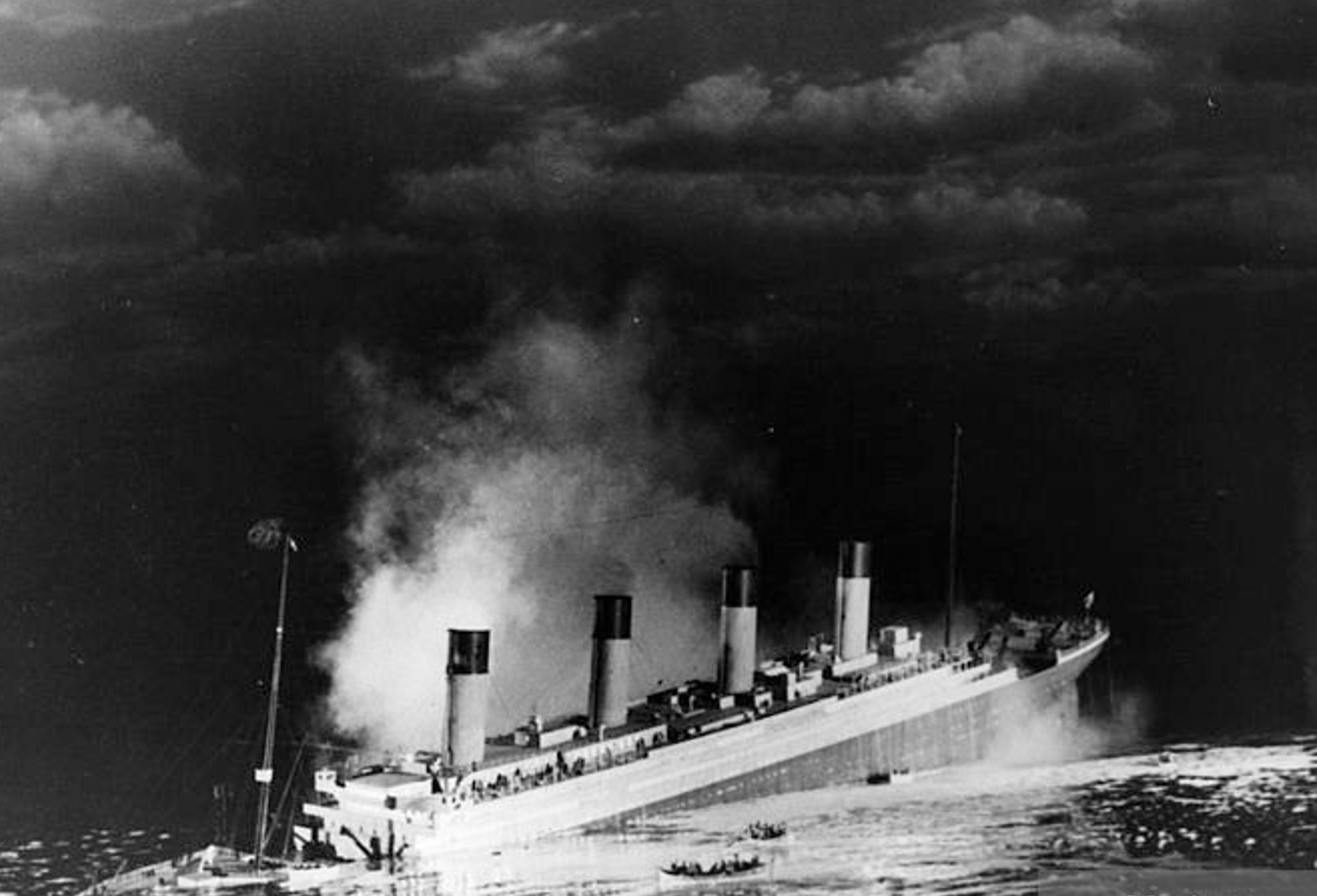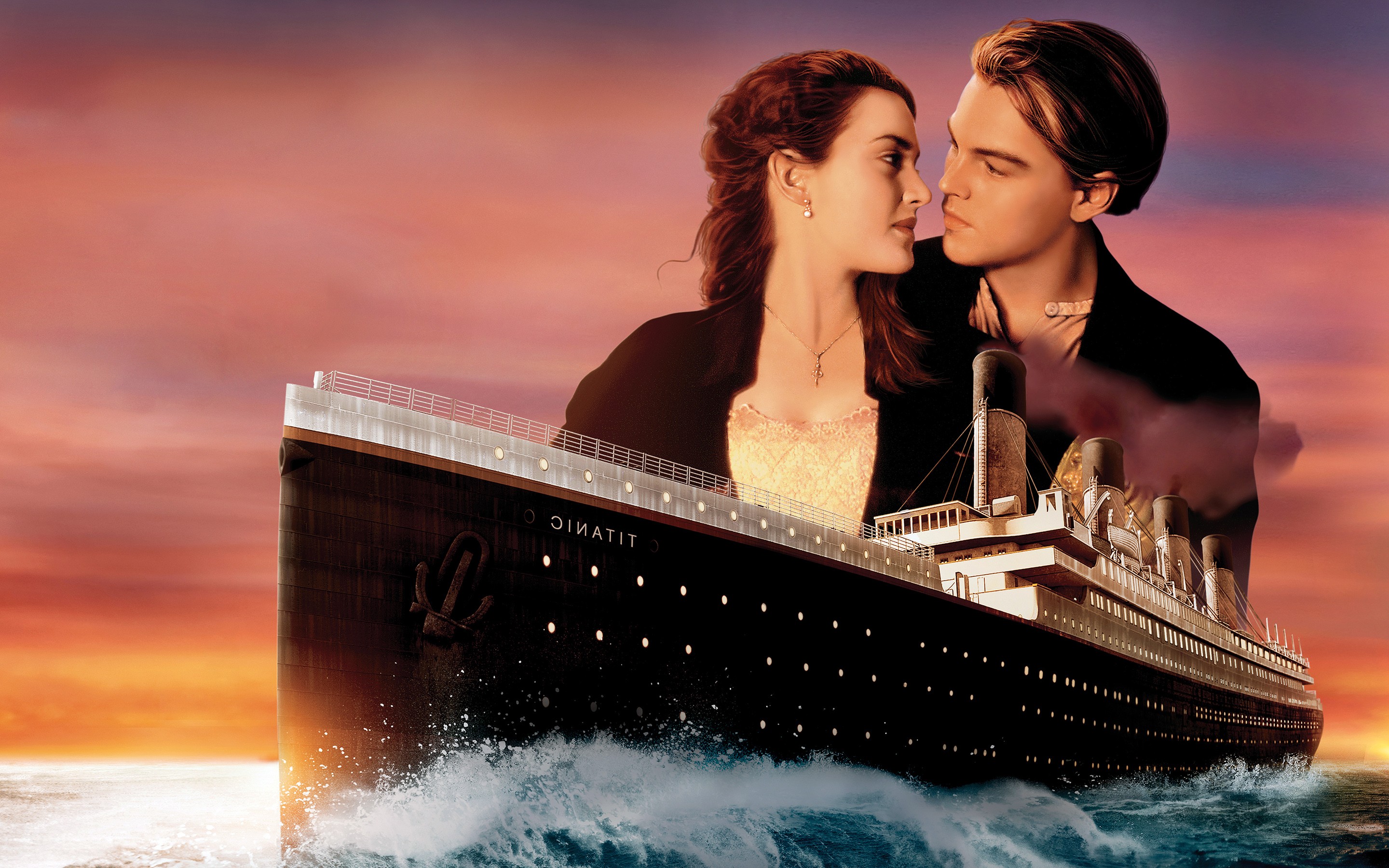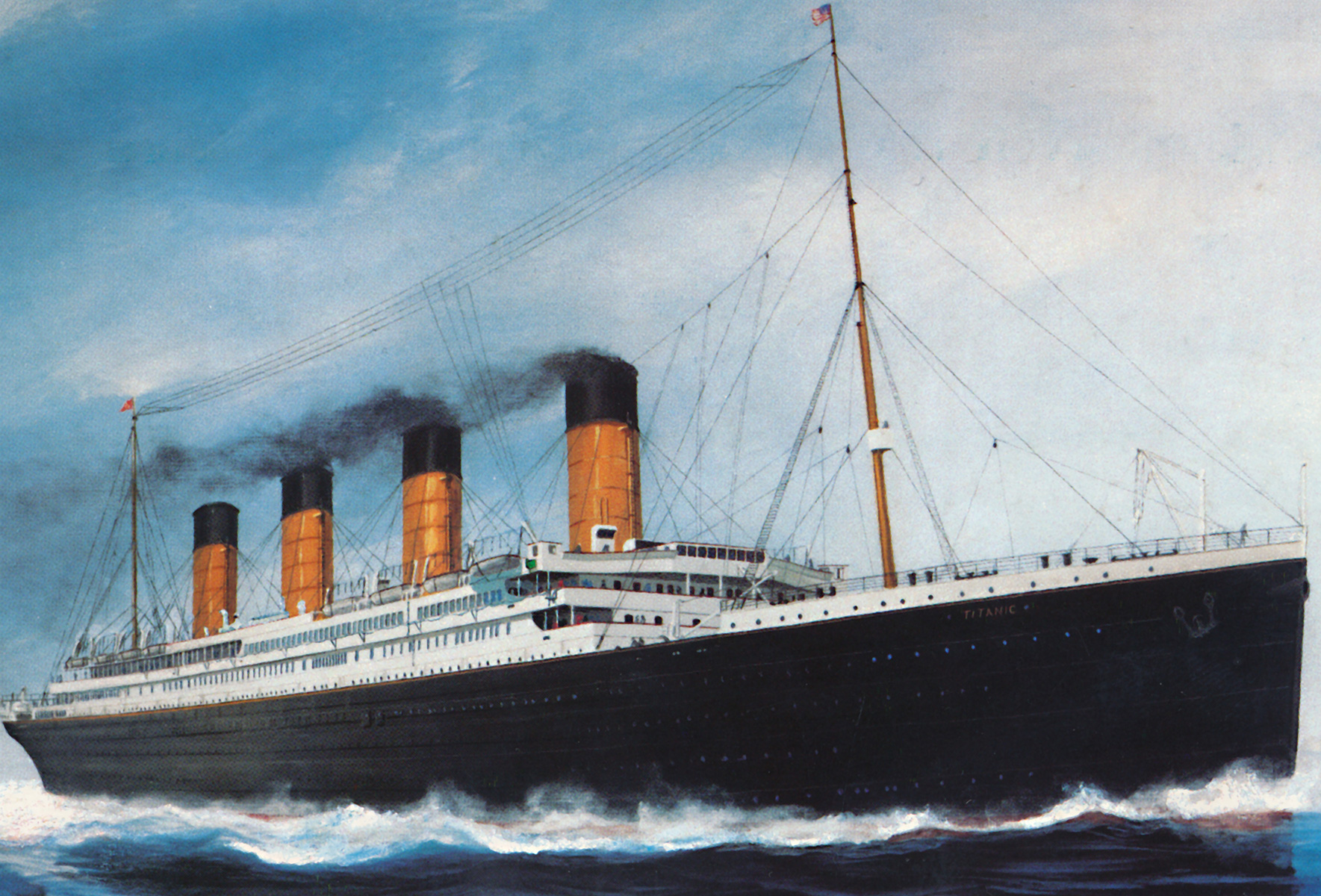Exploring The **Titanic Wreck Interior**: What Remains Deep Below?
Have you ever wondered what lies within the grand vessel that slipped beneath the waves over a century ago? The story of the RMS Titanic, a British ocean liner that met its end on April 15, 1912, after hitting an iceberg during its first trip from Southampton to New York City, has always held a powerful grip on our imaginations. People often think about the ship's opulent design, the lives aboard, and the tragic moment it went down. But what about the inside of the ship, now resting so far down in the dark ocean?
For many, the image of the Titanic is fixed in time, like in the famous film with Leonardo DiCaprio and Kate Winslet. We picture elegant dining rooms, lavish cabins, and that truly impressive grand staircase. Yet, the reality of the **titanic wreck interior** is very different from those polished, bright scenes. It's a place of quiet decay, a silent testament to a moment in history, shaped by the immense pressure and cold of the deep ocean, and also by the slow march of time.
Understanding what has happened to the **titanic wreck interior** helps us get a fuller picture of this famous ship. It's not just about facts or lists of victims and survivors; it's about seeing how a magnificent creation changes when it becomes part of the seabed. This look inside the wreck, you know, it tells a very different kind of story, one of nature's relentless power and the surprising ways things can hold on, even after so long.
- Flag Football Jerseys
- What Flag Green Yellow Red
- Sidney Poitier Children
- Tom Hanks Net Worth 2023
- Wrist Book Tattoos
Table of Contents
- The Titanic's Final Resting Place: A Glimpse Inside
- What the **Titanic Wreck Interior** Looks Like Today
- The Forces Shaping the **Titanic Wreck Interior**
- Seeing the **Titanic Wreck Interior**: Expeditions and Imaging
- Frequently Asked Questions About the **Titanic Wreck Interior**
- Protecting a Deep-Sea Memorial
The Titanic's Final Resting Place: A Glimpse Inside
The RMS Titanic, a very grand steamship, began its first journey on April 10, 1912, carrying 2,227 people, both passengers and crew. It was supposed to be a quick trip, you know, from Southampton to New York. But, on the night of April 14, something truly awful happened. The ship hit an iceberg, and this event changed everything for those aboard and for how we remember ocean travel.
The Ship's Unfortunate End
The collision with the iceberg, which happened in the early hours of April 15, 1912, off the coast of Newfoundland in the North Atlantic, was a sudden and very damaging blow. The ship, a White Star Line ocean liner, was designed to be quite strong, but the side impact was just too much. It caused a lot of tears in the hull, allowing water to rush in. This was the start of the ship's final hours, basically.
As the ship took on water, it slowly went down, and then, you know, it broke into two main parts. This breaking apart happened as it was sinking, a truly violent event that spread pieces of the ship across a wide area on the ocean floor. This fact is pretty important when we think about the **titanic wreck interior** today, because it means the inside spaces didn't just sink neatly; they were torn apart and scattered.
- Tyrus Shoe Size
- Jake Paul Married
- Letter Of Introduction Teacher To Parents Examples
- Perfect Match Who Is Still Together 2024
- Sample Application Letter For Security Guard
How the Wreck Came to Be
The two large sections of the Titanic, the bow and the stern, landed about a third of a mile apart on the seabed, some 2.4 miles below the surface. Between these two large pieces, there's a huge field of debris. This field contains thousands of items that fell from the ship as it went down, everything from personal belongings to parts of the ship's structure. This gives us a little bit of an idea, you know, of the chaos that happened.
The impact with the ocean floor, after such a long fall through the water, also caused more damage to the ship's structure. The bow section, which hit the bottom first, buried itself deep into the mud. The stern, on the other hand, was much more badly damaged during the sinking and the impact, basically collapsing upon itself. This means the **titanic wreck interior** in the stern is far less recognizable than in the bow, which is a bit of a sad reality.
What the **Titanic Wreck Interior** Looks Like Today
When people picture the **titanic wreck interior**, they often think of ghostly versions of the grand rooms. But the reality is much more about rust, decay, and the crushing force of the deep. Over a hundred years have passed since the ship went down, and the ocean has truly claimed it, changing almost everything inside.
The Grand Staircase: A Fading Legend
The Grand Staircase, a really famous part of the Titanic, was once a truly stunning feature, connecting several decks with its ornate wood and glass dome. Today, you know, this iconic part of the **titanic wreck interior** is mostly gone. The wooden parts, like the stairs themselves and the railings, were eaten away by marine life and the sheer passage of time. The dome, which let light into the ship, is also no longer there.
What remains where the staircase once stood is basically a large, empty shaft. You can see where the structure used to be, but the elegance and detail are lost. It's a rather stark reminder of how fragile even the most impressive human creations are against the natural world. It really shows, you know, how much the ocean can change things over the years.
Passenger Spaces: Cabins and Saloons
The cabins and public saloons, where passengers ate and socialized, were once filled with furniture, carpets, and personal items. Now, inside the **titanic wreck interior**, these areas are mostly empty shells. The wooden walls, the elegant furnishings, the fabrics—all of that organic material has long since disappeared, consumed by the deep-sea environment. What you see are the steel frames, the outlines of rooms, and maybe some ceramic pieces like toilets or sinks that have resisted decay.
The pressure at that depth is immense, and it basically crushed many of the weaker structures. So, even if something was still there, it would be very deformed. It’s pretty rare to find anything truly intact. The once grand dining saloon, for example, is now just a large, open space, with very little to suggest its former purpose, which is kind of sad, really.
The Decks and Promenade Areas
The promenade decks, where passengers walked and enjoyed the fresh air, are also greatly changed. The wooden decking has vanished, leaving only the steel beams and supports. These areas are now often covered in thick layers of rusticles, which are basically formations of iron-eating bacteria. So, you know, it’s not a smooth deck anymore; it’s a very textured, almost organic surface.
Looking at the outer decks gives a sense of the ship's overall structure, but the details are mostly gone. The railings, which were once strong and decorative, are now very fragile and corroded. It's a pretty stark difference from the deckplans that showed such clear, open spaces. The ocean has truly taken over these areas, making them part of its own, very deep, environment.
Engine Room and Mechanical Sections
The engine room and other mechanical parts of the **titanic wreck interior** are perhaps some of the most recognizable areas, oddly enough. This is because they were made of very thick, heavy metal, which has resisted decay better than wood or lighter materials. You can still see the massive boilers, the pistons, and parts of the machinery, though they are heavily encrusted with rusticles.
These areas offer a truly powerful glimpse into the ship's power and engineering. The sheer scale of the engines is still apparent, even in their ruined state. It’s a bit like looking at the skeleton of a giant, where the bones are still very much there, even if the flesh is gone. This part of the wreck, you know, really shows the raw power that once moved this huge ship.
Cargo Holds and Personal Belongings
The cargo holds and areas where personal belongings were stored are mostly open to the ocean now. Many of the items that were not in sealed containers were washed away or have simply decayed. However, some very durable items, like ceramics, glass bottles, and some pieces of luggage, have been found in the debris field surrounding the wreck. These items are truly poignant, offering a very personal connection to those who sailed on the ship.
It’s pretty rare to find these items within the ship's interior itself, as the holds are so exposed. But the fact that they exist at all, preserved by the cold, dark water, is a little bit amazing. They tell us a lot about the true stories of the passengers, and the lives they were bringing with them to a new place. It’s a very direct link, you know, to the people who were on board.
The Forces Shaping the **Titanic Wreck Interior**
The condition of the **titanic wreck interior** is not just about the sinking itself. It's also very much about the deep-sea environment and the natural processes that have been at work for over a century. These forces are constantly changing the wreck, slowly but surely turning it back into its basic elements.
The Deep-Sea Environment
The ocean floor where the Titanic rests is an extremely harsh place. It’s very cold, with temperatures just above freezing. The pressure is absolutely immense, strong enough to crush anything not built to withstand it. There’s also no light, so it’s completely dark. These conditions, you know, play a huge role in how the wreck has decayed.
The lack of oxygen at such depths means that some decay processes are slowed down compared to shallower waters. However, the constant flow of deep-sea currents also brings in new water and sediment, which can affect the wreck. It’s a really unique environment, and it basically acts as a very slow but powerful force on everything down there.
Microbes and Metal-Eating Organisms
One of the biggest factors affecting the **titanic wreck interior** is the presence of specialized microbes, particularly iron-eating bacteria. These tiny organisms form what are called "rusticles," which are basically reddish-brown, icicle-like structures that hang from the metal parts of the ship. These rusticles are slowly consuming the iron, turning the solid metal into a brittle, porous material.
These microbes are the main reason why the ship is decaying so much. They are literally eating the ship away, bit by bit. It's a very slow process, but over a hundred years, it has caused a lot of damage. So, you know, the ship is not just sitting there; it's actively being broken down by these very small, but very powerful, living things.
Human Impact and Preservation Efforts
Since the wreck was found in 1985, there have been many expeditions to visit it. While these visits have helped us learn a lot about the ship and its fate, they have also had some impact on the wreck. Submersibles landing on the ship, for example, can disturb the structure and the delicate rusticles. There's a balance, you know, between studying the wreck and making sure it stays as undisturbed as possible.
Because of its historical importance, there are international efforts to protect the Titanic wreck as a memorial site. Agreements are in place to try and limit disturbance and preserve what remains. It’s a very important discussion, really, about how we respect such a significant piece of history while still trying to understand it better. This helps make sure that the **titanic wreck interior**, what's left of it, is treated with care for the future.
Seeing the **Titanic Wreck Interior**: Expeditions and Imaging
Getting a look at the **titanic wreck interior** is a truly challenging task. The depth, the darkness, and the fragile nature of the wreck make it very difficult. Yet, over the years, technology has allowed us to gather more and more information, giving us a clearer picture of what lies inside.
Early Discoveries and Visuals
When the wreck was first found, the images were pretty grainy and not always clear. Early expeditions used remote-controlled vehicles and submersibles to take photos and videos. These first glimpses were truly groundbreaking, confirming the ship had broken apart and showing the sheer scale of the wreckage. They gave us the first real sense, you know, of the **titanic wreck interior** as it existed on the ocean floor.
These early visuals, though limited, were absolutely vital for understanding the disaster and what happened to the ship. They showed the bow section, still somewhat recognizable, and the much more damaged stern. It was a very powerful moment for people around the world, finally seeing what had been hidden for so many decades.
Modern Technology and 3D Models
Today, advanced technology has really changed how we can view the **titanic wreck interior**. High-resolution cameras, sonar mapping, and remotely operated vehicles (ROVs) can create incredibly detailed images and even 3D models of the wreck. These models allow researchers and the public to "virtually" explore the interior, seeing the current state of rooms and corridors with a clarity that was once impossible.
These modern techniques are pretty amazing, offering a much deeper understanding of the wreck's decay and its current condition. They help us track changes over time and provide a more accurate picture of the **titanic wreck interior** than ever before. It's almost like being there, you know, without actually having to go down to such extreme depths.
Frequently Asked Questions About the **Titanic Wreck Interior**
People often have a lot of questions about the Titanic, especially about what's left of its inside. Here are some common things people wonder about, you know, when they think about the ship's deep-sea resting place.
Is anything left of the Titanic's interior?
Yes, some parts of the **titanic wreck interior** are still there, but they are very much changed. The wooden elements, like furniture, paneling, and the grand staircase's wood, have mostly decayed or been consumed by marine life. However, metal structures like bulkheads, door frames, and heavy machinery in the engine rooms remain. Ceramic items, such as toilets and some dishes, have also survived. It's basically a skeleton of what it once was, covered in rusticles, but the outlines of many spaces are still visible, which is pretty interesting.
Can you still see the Grand Staircase on the Titanic wreck?
Sadly, the Grand Staircase as it was originally known is no longer visible. The wood and other organic materials that made up the stairs and ornate railings have completely disintegrated. What remains is the open void where the staircase once stood, a bit like a large, empty shaft. You can see the footprint of where it was, and the surrounding metal structure, but the actual staircase itself is gone. It's a truly poignant loss, you know, given how iconic it was.
What happened to the furniture inside the Titanic?
Most of the furniture inside the Titanic, which was largely made of wood, fabric, and other organic materials, has not survived the century at the bottom of the ocean. It has either decayed naturally, been eaten by deep-sea organisms, or was swept away during the sinking and the subsequent breakup of the ship. Some very durable items, like porcelain fixtures or metal pieces from furniture, might be found in the debris field, but the grand pieces of furniture seen in old photographs or movies are no longer within the **titanic wreck interior** itself. It’s a very clear example, really, of how quickly things can disappear in that environment.
Protecting a Deep-Sea Memorial
The **titanic wreck interior** is more than just a collection of decaying metal and lost artifacts. It is a very important historical site, a memorial to the over 1,500 people who lost their lives on April 15, 1912. The true stories of the Titanic, its passengers, and crew are deeply connected to this silent place at the bottom of the ocean. It’s a place that holds a lot of meaning for many, you know, a true ship of dreams that became a legend.
As the years go by, the wreck continues to change, slowly being reclaimed by the ocean. The ongoing efforts to map and study the wreck, while respecting its status as a grave site, are very important. They help us learn more about the ship, its construction, and the disaster details, all while ensuring that this incredible piece of history is honored. Learn more about maritime history on our site, and link to this page to discover more about deep-sea exploration techniques that allow us to see such amazing places.
The future of the **titanic wreck interior** will involve careful monitoring and continued efforts to understand its slow decay. It’s a very delicate balance, basically, between research and preservation. What remains of the ship's inside will continue to tell a powerful story, a very quiet one, about a ship that truly captured the world's attention, both in its grandeur and in its tragic end.
- Revenge Cheating Memes
- Prayers For People Having Surgery
- Janoskians Beau Brooks
- Cast Of The Good Shepherd
- Who Is Aaron Rodgers Girlfriend Now

When did the Titanic sink, what happened, and where and at what depth

Titanic Movie Wallpaper Hd

The Tragic Tale of the Titanic: Uncovering its History, Sinking, and